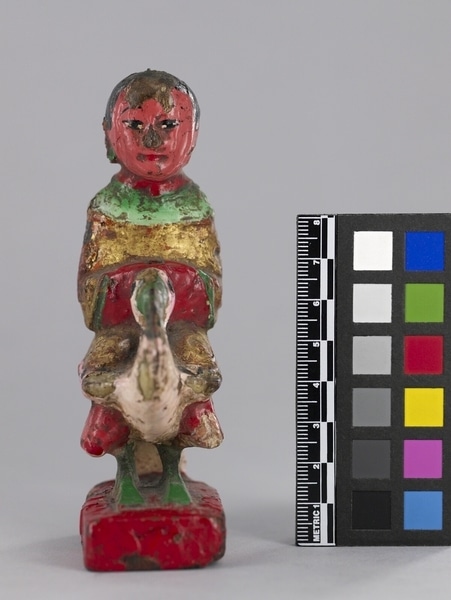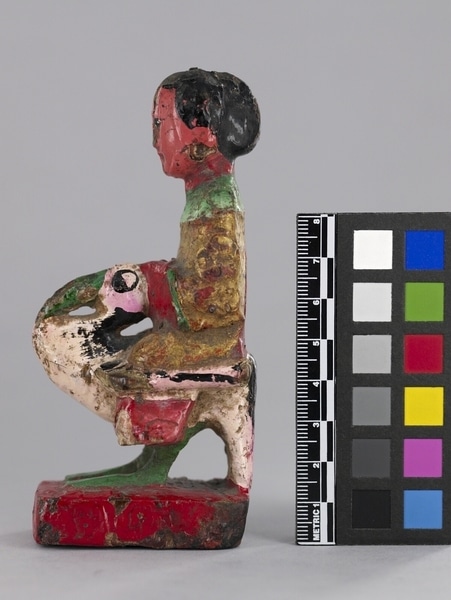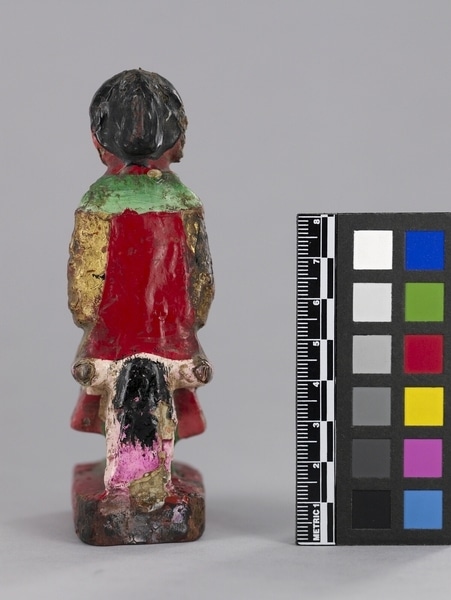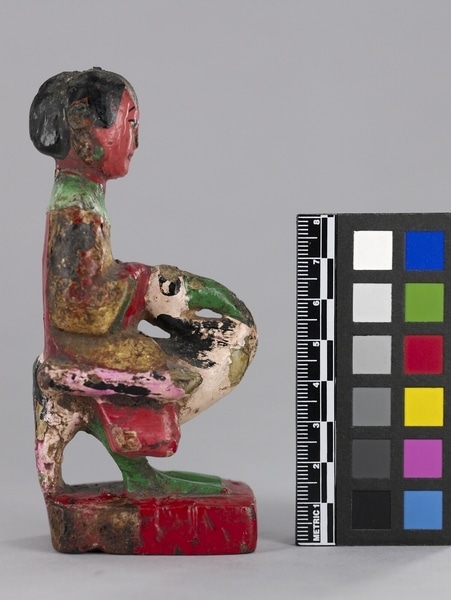Figure Item Number: Edz1093 from the MOA: University of British Columbia




Description
Miniature wooden figure of a woman sitting on a white crane--woman has black hair and wears a gold, green and red robe. Bird is white with a green bill and feet. Base is a flat, red wooden rectangle.
History Of Use
Small carved and painted images were used by boat-dwelling people to represent deceased ancestors so that offerings could be made to them. Boat-dwelling people, called Tanka or, more respectfully, Seuih Seung Yahn, spent their entire lives on boats except for going ashore to fetch water, to market their catch, to bream their boats, and to bury their dead. They made their living through fishing or transport of goods. They were discriminated against by land-dwellers, and their children were not allowed to attend school, so that they remained illiterate. For this reason, they could not represent ancestors with written tablets giving their names. In Hong Kong, and probably in Macao, their conditions improved in the 1960s, when they were encouraged to move onto land and their children to attend school. Whether or not they continue to use images to represent ancestors is a subject for future research.
Iconographic Meaning
The crane represents the ancestor’s vehicle in the next life, and also indicates that the ancestor is female.
Narrative
This image was purchased by Elizabeth Johnson from a shop in Macao, which at that time was a Portuguese colony.
Item History
- Made in Macau ? before 1979
- Collected by Elizabeth L. Johnson during 1979
- Owned by Mountain Folk Craft
- Owned by Elizabeth L. Johnson before March 17, 1980
- Received from Elizabeth L. Johnson (Seller) and Museum of Anthropology Shop Volunteers (Funding source) on March 17, 1980
What
Who
- Culture
- Chinese
- Field Collector
- Elizabeth L. Johnson
- Previous Owner
- Mountain Folk Craft and Elizabeth L. Johnson
- Received from
- Elizabeth L. Johnson (Seller) and Museum of Anthropology Shop Volunteers (Funding source)
Where
- Holding Institution
- MOA: University of British Columbia
- Made in
- Macau ?
When
- Creation Date
- before 1979
- Collection Date
- during 1979
- Ownership Date
- before March 17, 1980
- Acquisition Date
- on March 17, 1980
Other
- Item Classes
- carvings & sculpture
- Condition
- fair
- Accession Number
- 0610/0063